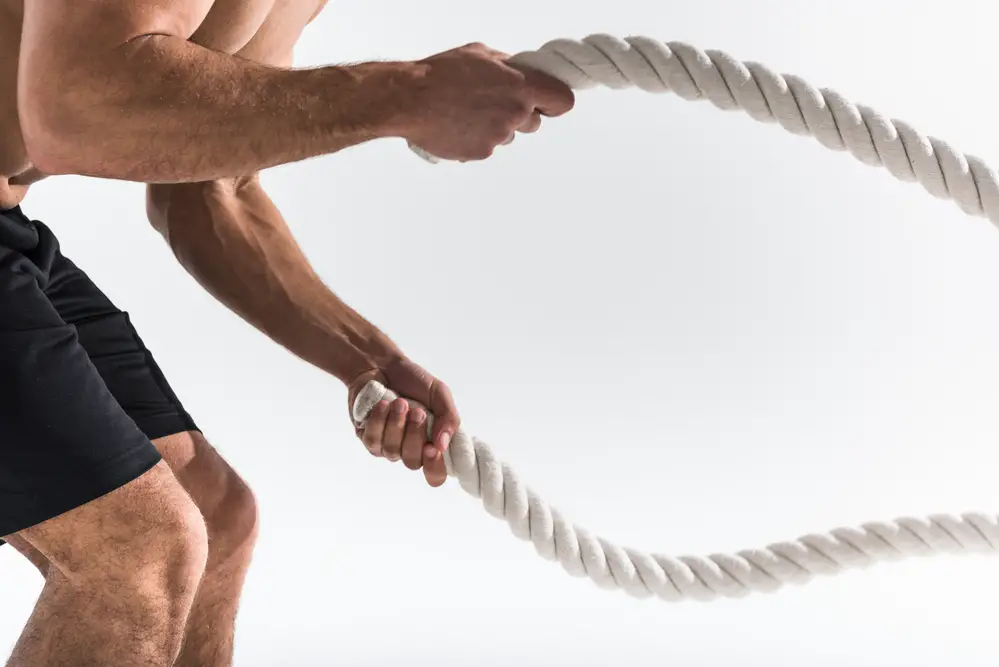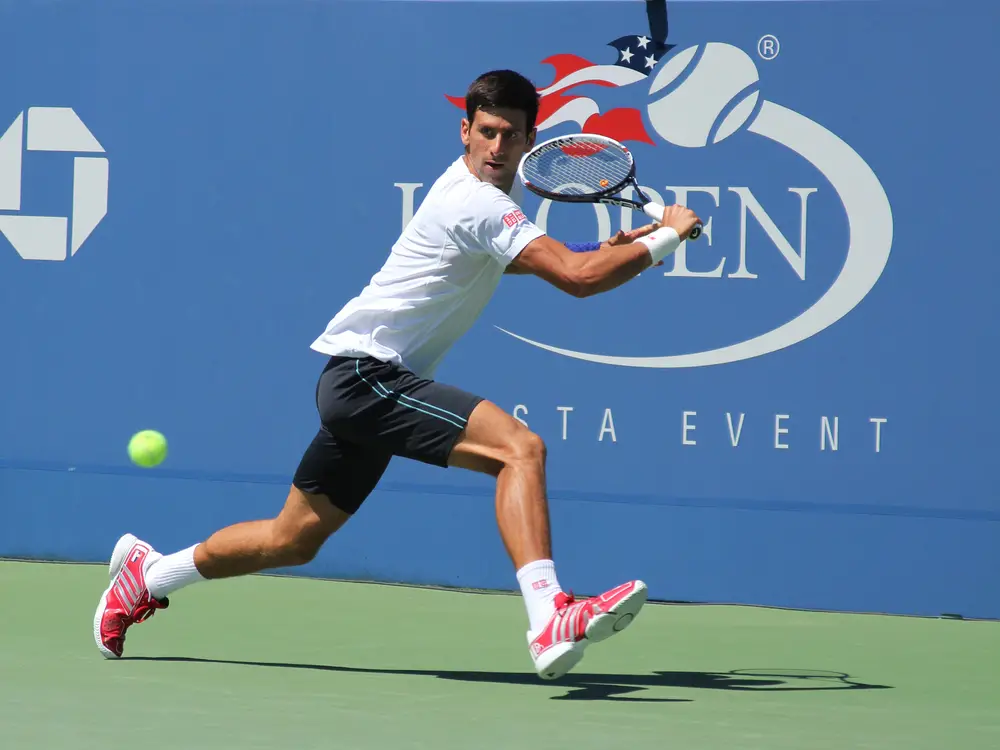Many tennis players don’t limit themselves to just tennis. This is the case at both professional and amateur levels.
World number 1 Novak Djokovic likes to do yoga. Perhaps this is why he is one of the most flexible men on tour. Nick Kyrgios plays basketball.
Before they reach the age of around 14, most tennis players are encouraged to do other sports.
What about something as simple as jogging? Are there benefits to that? Do tennis players jog?
Many tennis players jog, and gentle jogging forms a part of the warmup for players at various levels. Jogging is good as it works as a gentle pulse raise before the more intense cardio that comes with tennis. Jogging is also relaxing for some.
You may not think that jogging is intense enough for tennis, but there are many reasons for tennis players to jog.
In this article I will be discussing:
- Whether long distance running is useful for tennis conditioning
- If tennis players do running as a form of training
- How far tennis players run in a match
If you’d like to learn more about the relation between jogging and tennis, read on!
Does Long Distance Running Help For Tennis Conditioning?

Tennis is a unique sport because it has a combination of fast-paced movements spread over a long period.
By this, I mean that it is fast when the point has begun, and your heart rate will be high.
You will get a break between each point, but you need to maintain your condition for the entire match. Some tennis matches go on for over 3 hours.
Long-distance running will give you good aerobic training. The term “aerobic” literally means “with oxygen.”
Taking it literally, aerobic could refer to any form of cardio exercise. Still, most often, you will divide cardio into aerobic and anaerobic.
In this context, aerobic refers to lower intensity exercise over a longer period. Conversely, anaerobic training involves higher levels of intensity over a shorter period.
High-intensity interval training (HIIT) is considered a form of anaerobic exercise.
The most relevant form of cardiovascular training for tennis is HIIT. HIIT is the most relevant because it simulates the intensity of a tennis match.
Think for a moment. When you play tennis, it is usually 20 seconds of intense play followed by 15-20 seconds of active rest.
This is why HIIT is such an effective training method for tennis players.
If you sprint for 20 seconds and then jog for 20, this is pretty similar to the rhythm of a tennis match.
Long-distance running will be beneficial for tennis players as it improves endurance and muscle power. But this form of training is not the most efficient. That honor goes to HIIT.
In any sport, you want to design a training program that is relevant to the activity. For example, there is absolutely no point in getting a tennis player to run on a treadmill with a high incline setting.
This is because tennis courts are flat. Players will never be competing on a hill.
Do Tennis Players Run For Training?

Almost all tennis players will have or have had an element of running in their training programs. This is because when you play tennis, you are standing up and moving.
Going for a run is pretty similar. You are up on your feet and moving at a brisk pace.
There are many different ways you can run. For example, in tennis, I wouldn’t say the distance run is as important as the variation in intensity.
If you do long-distance running in the traditional sense, it is unrealistic. For example, in tennis, you do not jog slowly to a point, deliberately saving yourself for the end.
You don’t know how long a point will last and thus how long you need to save your energy.
At the same time, short-distance sprinting is not as realistic. In tennis, you don’t always sprint using 100% of your energy.
You adapt your intensity and foot movements in relation to the ball your opponent has just hit.
A far better form of training would be to set aside a certain amount of time and flick between zones.
You could run for a total of an hour and vary it like this. Sprint for 20 seconds and then jog for one minute.
This will be more realistic as it gets your body into the habit of switching intensity zones. Exactly as you do in a tennis match.
The other issue with running as a form of training is the direction of movements. Yes, you do run forward in tennis, but the most common movements are side to side.
On top of this, it is not just moving in one direction. You need a good level of agility.
Running in a straight line is hardly going to improve your agility. You would benefit far more from doing drills that involve running between cones and changing direction.
How Many Miles Do Tennis Players Run In A Match?

I’ve recently gotten into using a Fitbit (Amazon). Since using it, I’ve become obsessed with clocking up as many steps as I can.
A typical day’s work for me involves 4-8 hours on court. I was amazed at how many steps I would rack up.
When I coach or play myself, I take even more steps than when going for a walk.
Fitbit reported in 2020 that an hour’s tennis generated an average of 10,680 steps. In doubles, it is a little less at 7980 steps.
In a standard run, these steps would equal between 3 and 5 miles.
Remember that tennis is a sport in which most of the movement is lateral (side-to-side). Therefore, steps taken in tennis will not cover the same distance as walking in a straight line.
At the 2021 Wimbledon Final, Novak Djokovic ran 3.83 miles. His opponent Matteo Berrettini ran a total of 3.64 miles.
The match lasted 3 hours and 23 minutes. This means Djokovic averaged 1.13 miles per hour and Berrettini 1.08.
This time also includes the breaks. Thus, the average would be much higher if you just measured the time when points are active.
Many different factors influence how far a tennis player will run in a match.
Here are some of them:
- Height
- Ball placement from the opponent
- Distance from the baseline
I believe looking at how far a tennis player has run has little relevance in measuring intensity.
Tennis players are constantly changing direction and using quick bursts of energy. Unfortunately, this will not be reflected in stats covering the distance run.
Final Words
Jogging has many benefits for tennis players. It may not be the most effective method of physical training, but it is a great warmup.
Going for a gentle jog can also be a great way to relax.
Do you have a physical training program? Does it include jogging? Do you think that jogging helps your tennis game?

